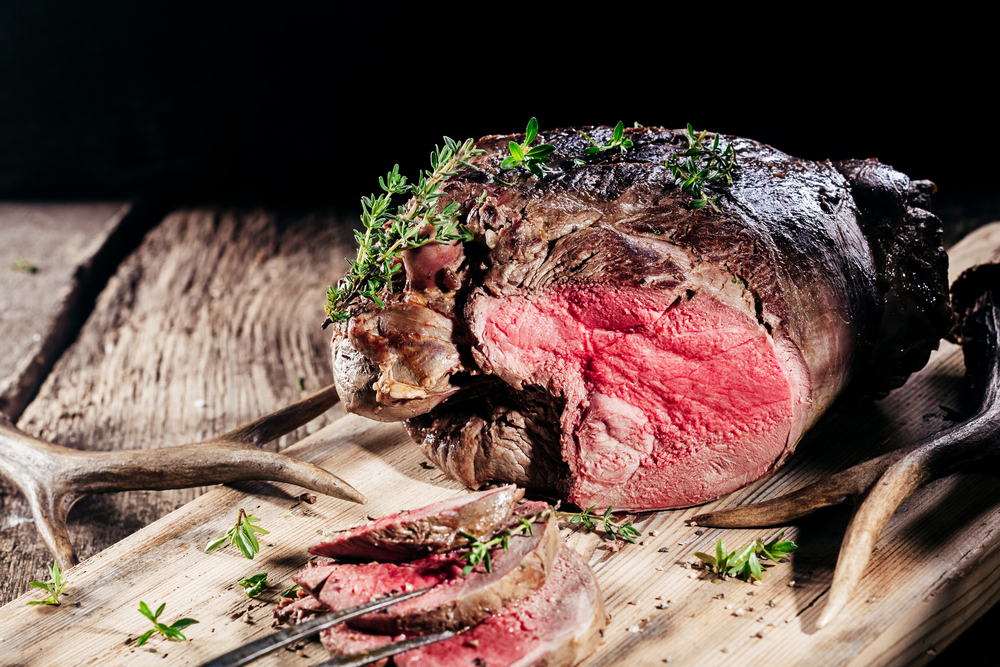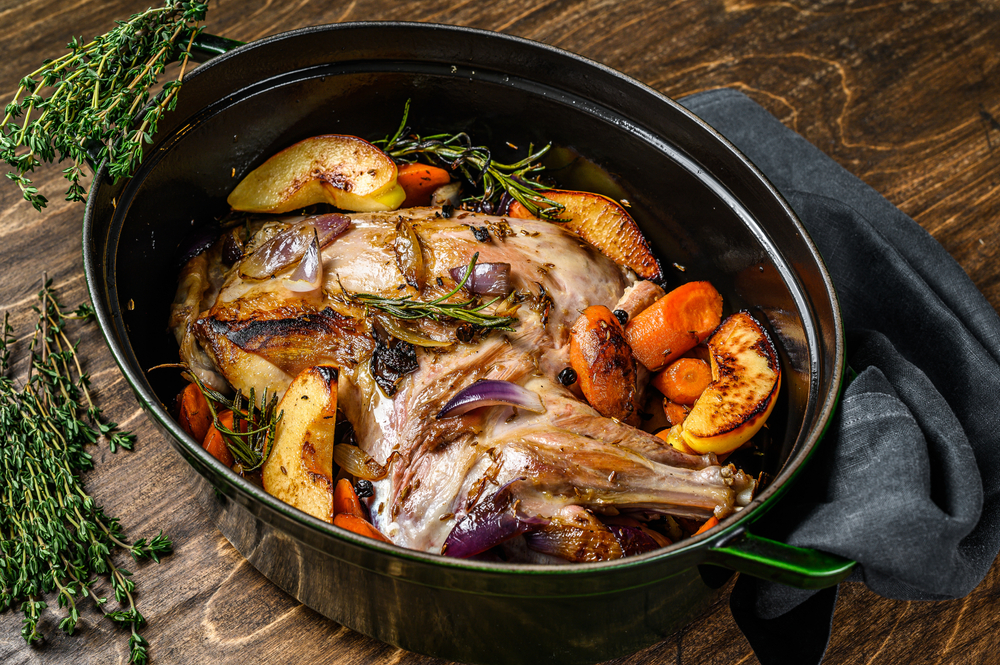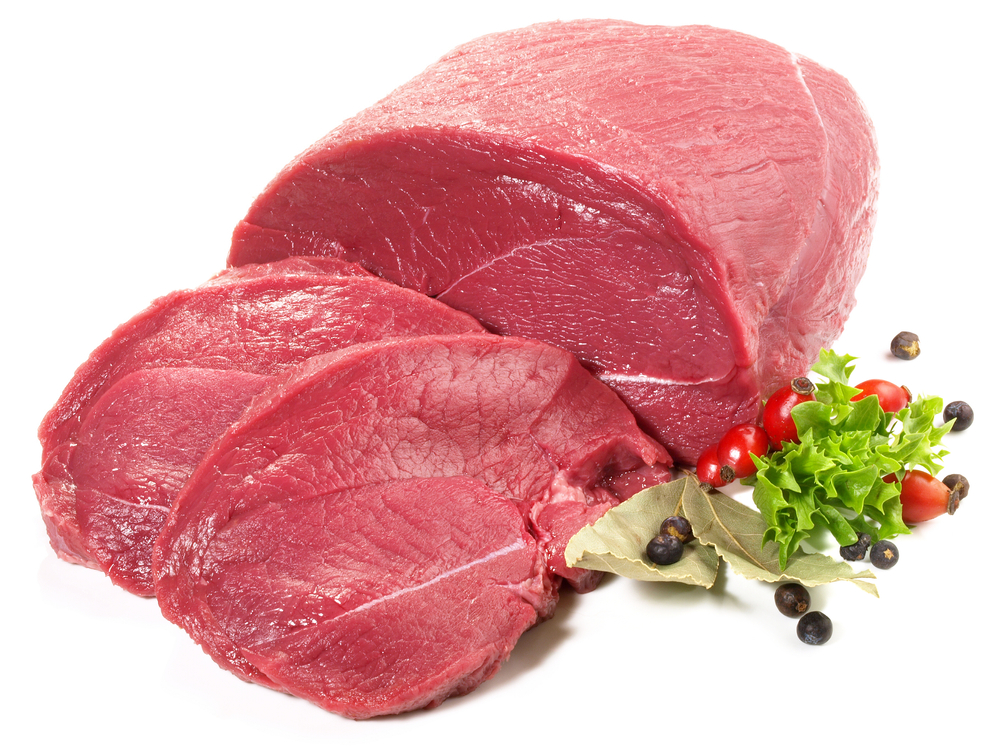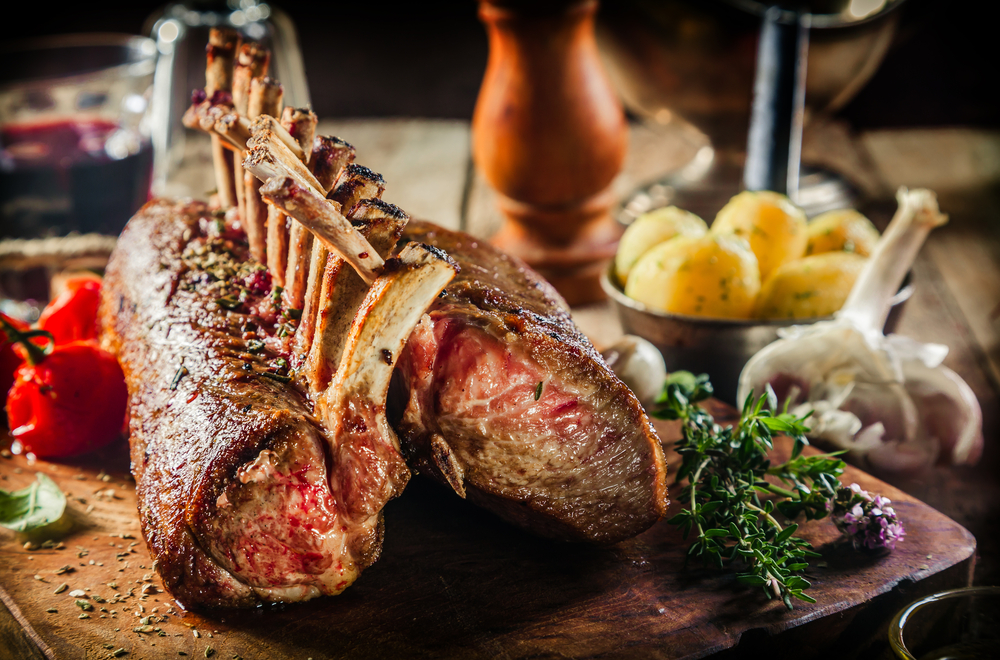I have always been curious about the taste of moose meat. Is it similar to beef or does it have a distinct flavor?
Moose meat is not widely available in most countries, but it is considered a delicacy in some regions. In this article, I will explore what moose meat tastes like and how it compares to other meats.
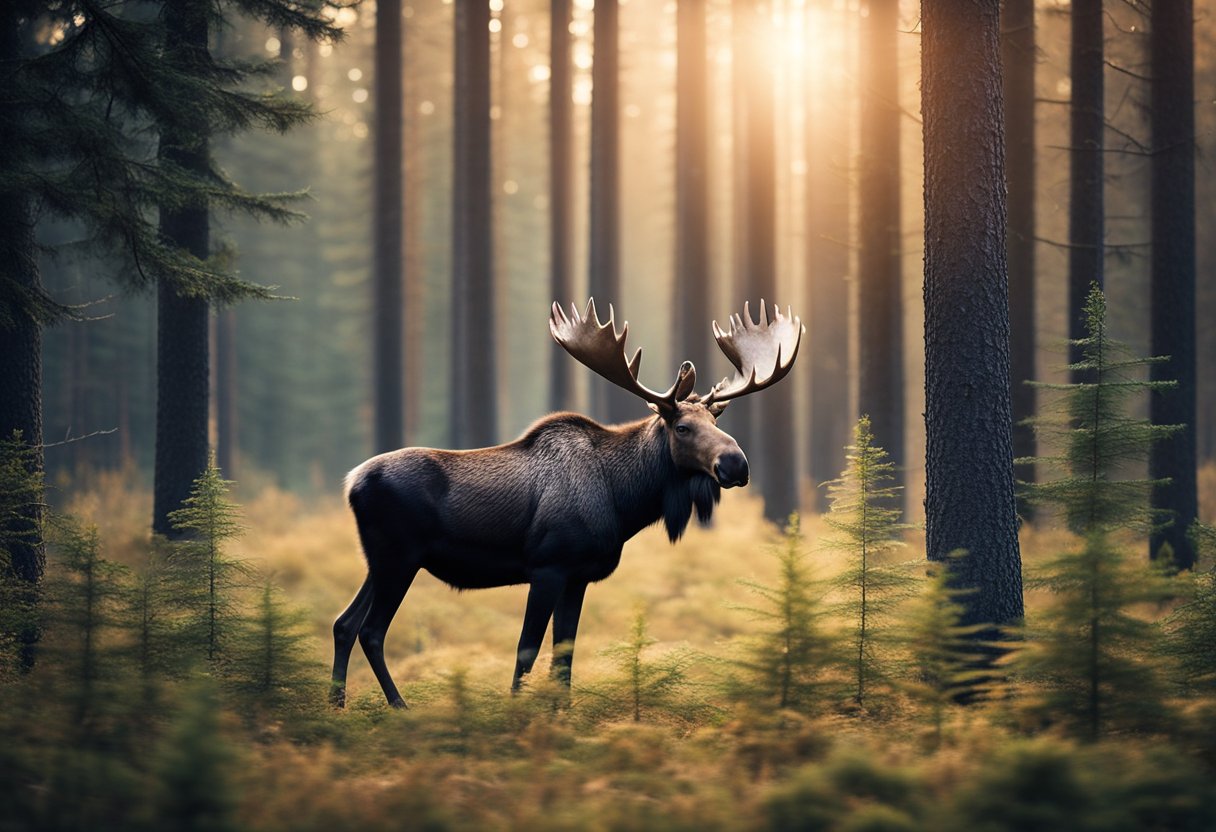
Understanding Moose Meat Moose meat is leaner than beef and has a lower fat content, making it a healthier option. It is also high in protein and essential nutrients such as iron, zinc, and vitamin B12.
Moose meat is popular in some regions of North America, such as Alaska and Canada, as well as in Scandinavian countries like Sweden and Finland.
Comparing Moose Meat to Other Meats Moose meat tastes similar to beef, but it has a stronger and gamier flavor. It is often compared to bison meat, which is also lean and has a gamey taste.
The flavor of moose meat can also vary depending on the animal’s diet, age, and sex. Moose meat is best cooked low and slow to maintain its tenderness and flavor.
Key Takeaways
- Moose meat has a distinct, gamier flavor compared to beef and is often compared to bison meat.
- Moose meat is lean and high in protein, iron, zinc, and vitamin B12, making it a healthy option.
- The flavor of moose meat can vary depending on the animal’s diet, age, and sex, and it is best cooked low and slow to maintain its tenderness and flavor.
Understanding Moose Meat
As someone who has had the privilege of experiencing the thrill of hunting and savoring moose meat, I can confidently say that it is a unique and distinct type of meat.
Moose meat refers to the meat of a wild shot moose, and it has a flavor similar to beef but with a slightly gamier taste.
Moose meat is a great source of protein and is low in fat, making it a healthy choice for those who are conscious of their nutritional intake.
It is also high in essential minerals and vitamins, such as iron and vitamin B12, which are important for maintaining good health.
When it comes to cooking moose meat, it is important to keep in mind that it is lean and can become tough when cooked on high heat.
It is best to cook it low and slow, using methods such as braising, stewing, or roasting. This will help to ensure that the meat is tender and flavorful.
When buying moose meat, it is important to look for cuts with even marbling throughout, as these will be the most tender and flavorful.
Moose often carries the flavor of their diet in the area they lived in, usually a floral taste from willow buds. This can add an interesting and unique flavor to the meat.
In summary, moose meat is a delicious and nutritious type of wild game meat with a unique flavor and nutritional value. It is important to cook it properly and choose quality cuts to ensure the best taste and texture.
Comparing Moose Meat to Other Meats
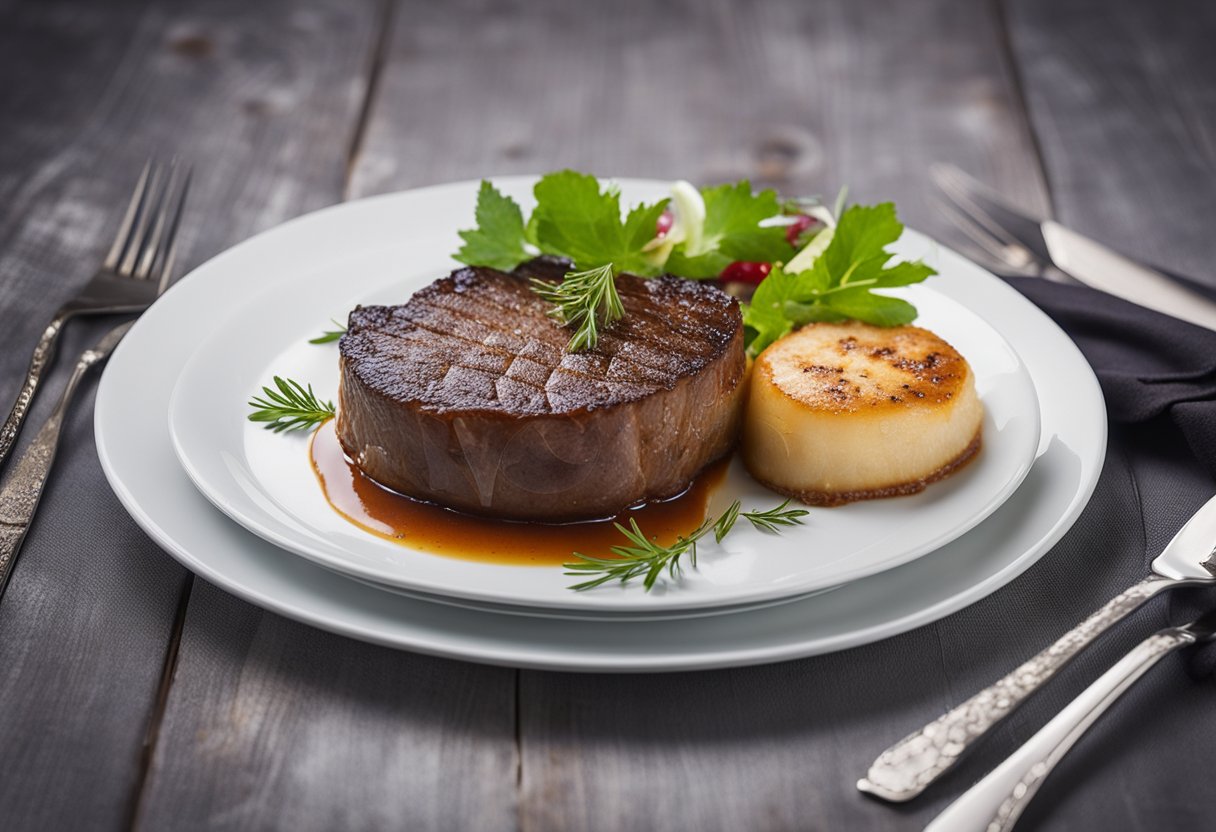
When it comes to meat, there are many different types available. Each type has its own unique flavor, texture, and nutritional value. In this section, I will compare moose meat to other types of meat to give you an idea of what you can expect.
Moose Vs. Beef
Beef is one of the most popular meats in the world. It is known for its tender texture and rich flavor. Moose meat, on the other hand, is much leaner and has a tougher texture.
Moose meat is also much lower in fat than beef, making it a healthier option. Moose meat has a unique flavor that is often described as gamey or wild.
Moose Vs. Deer
Deer meat, also known as venison, is often compared to moose meat. Both meats have a gamey flavor and a lean texture. However, moose meat is generally considered to be tougher and has a more distinct flavor than deer meat.
Moose Vs. Elk
Elk meat is another type of game meat that is often compared to moose meat. Elk meat has a similar texture and flavor to moose meat, but it is generally considered to be milder in flavor. Moose meat is also leaner than elk meat, making it a healthier option.
Moose Vs. Bison
Bison meat is often compared to beef due to its similar texture and flavor. However, bison meat is leaner than beef and has a slightly sweeter flavor. Moose meat, on the other hand, has a more distinct and wild flavor than bison meat.
Moose Vs. Chicken
Chicken is a very different type of meat compared to moose. Chicken is much leaner and has a milder flavor than moose meat. Moose meat is also much higher in protein and iron than chicken, making it a healthier option.
Overall, moose meat has a unique flavor and texture compared to other types of meat. It is lean, high in protein, and has a distinct wild flavor that sets it apart from other meats.
Factors Affecting the Taste of Moose Meat
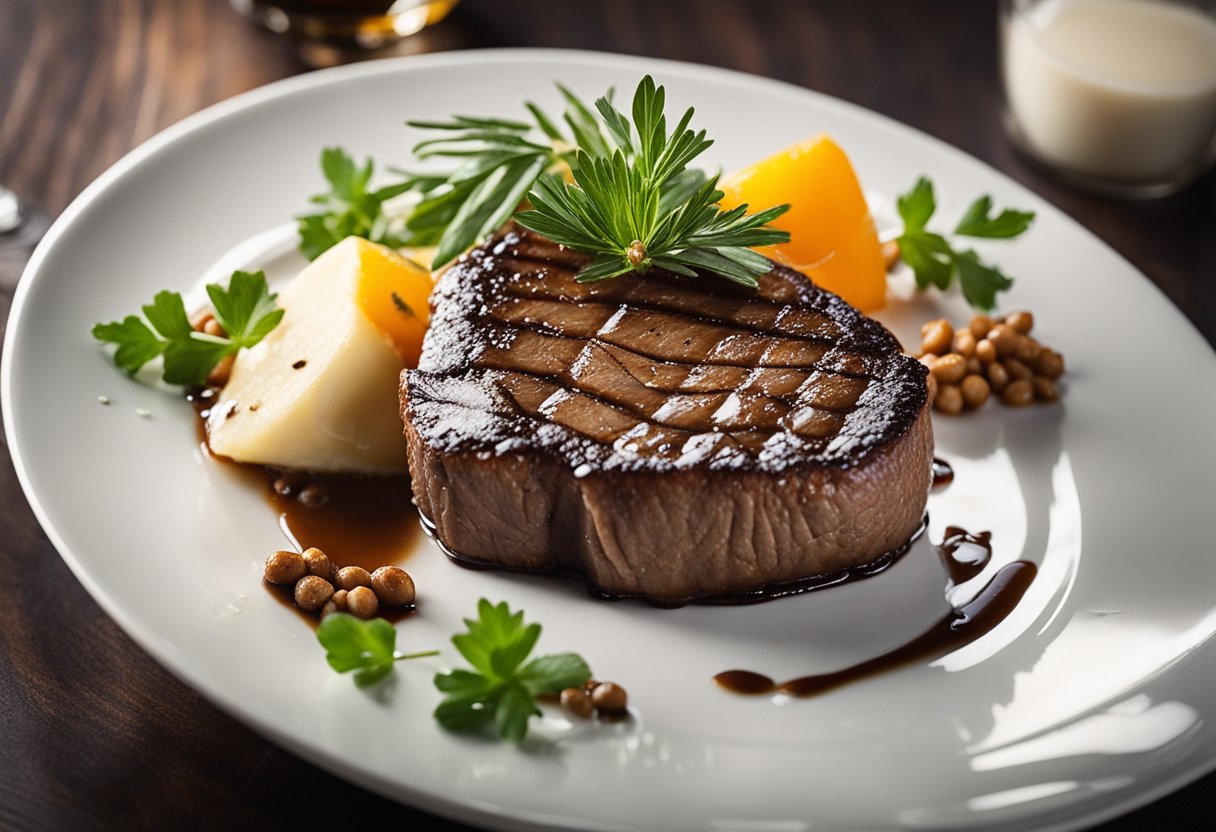
As a food lover, I have always been fascinated by the unique flavors of different meats. Moose meat is no exception. The taste of moose meat can vary depending on several factors. In this section, I will discuss the factors that affect the taste of moose meat.
Age and Sex of the Moose
The age and sex of the moose can affect the taste of its meat. A calf has a delicate flavor compared to an old moose. The meat of an old moose can be tough and have a stronger gamey taste.
Moreover, male moose have antlers while females do not. Male moose tend to have tougher meat than female moose.
Diet of the Moose
The diet of the moose can also affect the taste of its meat. Moose are herbivores and eat a variety of plants, such as willow buds, leaves, and other vegetation.
Animals that graze on natural food sources such as wild berries and grains will have a different taste compared to those that consume only commercial feeds or human-generated food. Moose that eat a natural diet tend to have a wilder and more distinct flavor.
Season of Hunting
The season in which the moose is hunted can also affect the taste of its meat. Moose that are hunted during the spring and summer tend to have a nicer taste because the animals eat better in these times.
This is because the animals have access to more food sources, which can affect the flavor of their meat.
In conclusion, the taste of moose meat is affected by several factors such as age, sex, diet, and season of hunting. Understanding these factors can help you choose the right cut and preparation method for your moose meat.
Preparing and Cooking Moose Meat
Moose meat has a unique flavor that is distinct from other meats. It has a wild, gamey taste that is often described as being similar to beef, but with a slightly gamier texture.
When it comes to cooking moose meat, there are several methods that can be used to bring out its best qualities.
Grilling Moose Meat
Grilling is a popular way to cook moose meat, as it allows you to enjoy the full flavor of the meat without adding any additional fats or oils.
To grill moose steak or sirloin, it’s important to marinate the meat first to help tenderize it and infuse it with flavor. A simple marinade made with oil, garlic, salt, pepper, and herbs like sage, thyme, and rosemary works well.
When grilling moose meat, it’s important to cook it to the proper temperature to ensure that it is safe to eat. Moose meat should be cooked to an internal temperature of at least 160°F (71°C) to kill any harmful bacteria.
Roasting Moose Meat
Roasting is another great way to cook moose meat, especially if you’re cooking larger cuts like a moose loin or heart.
To roast moose meat, it’s important to season it well with salt, pepper, and herbs like sage, thyme, and rosemary. You can also add some butter or oil to help keep the meat moist as it cooks.
When roasting moose meat, it’s important to keep an eye on the temperature to ensure that it doesn’t become overcooked and tough.
Moose meat is best cooked to an internal temperature of 145°F (63°C) for medium-rare, or 160°F (71°C) for medium.
Making Moose Stew and Sausages
Moose meat is also great for making stews and sausages. When making moose stew, it’s important to cook the meat low and slow to help tenderize it and infuse it with flavor.
You can also add vegetables and herbs like sage, thyme, and rosemary to enhance the flavor of the stew.
When making moose sausages, it’s important to use a good mix of spices and herbs to give the sausages a unique flavor. Red wine, garlic, salt, and pepper are all great additions to moose sausage.
You can also add vegetables like onions and peppers to give the sausages a bit of extra flavor.
Overall, moose meat is a delicious and unique meat that can be prepared in a variety of ways. Whether you’re grilling, roasting, or making stew or sausages, moose meat is sure to impress with its distinct flavor and tender texture.
Health Benefits of Moose Meat
Moose meat is a great source of nutrition and offers several health benefits. Here are some of the benefits of consuming moose meat:
Low in Fat, High in Protein
Compared to other meats, moose meat is extremely low in fat content. Moose has about 1% fat compared to beef, chicken, or pork which can have fat that ranges from 35-55%. This makes it an excellent choice for people who are trying to cut down on their fat intake.
Moose meat is also high in protein, which makes it a great option for athletes and people who are looking to build muscle.
Nutritional Value
Moose meat is rich in vitamins and minerals, including iron, zinc, and B vitamins. It also has a unique fatty acid profile that is not found in other meats. This makes it a great choice for people who are looking for a nutrient-dense food.
Low Cholesterol
Moose meat is low in cholesterol, which makes it a great option for people who are looking to maintain healthy cholesterol levels. It is also a good source of omega-3 fatty acids, which are essential for heart health.
Other Health Benefits
Moose meat is also known to have other health benefits, including:
- Low sodium content
- High potassium content
- May help reduce the risk of heart and kidney disease
Overall, moose meat is a great source of nutrition and offers several health benefits. It is low in fat, high in protein, and rich in vitamins and minerals. If you are looking for a healthy and delicious meat option, moose meat is definitely worth considering.
Moose Meat Around the World
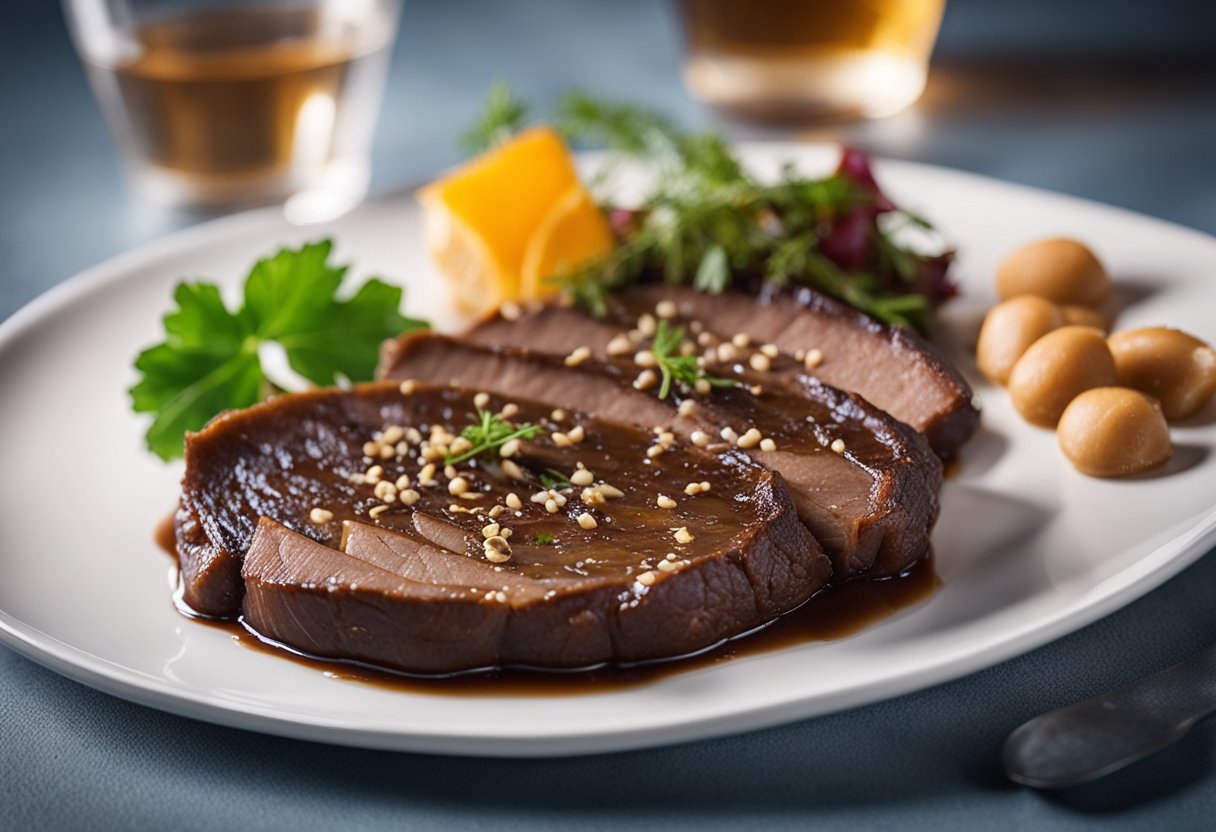
When it comes to moose meat, it’s a delicacy that is enjoyed in various parts of the world. Moose meat is a fantastic source of protein and nutrition, and it has a unique flavor that makes it stand out from other meats. In this section, I will discuss the taste of moose meat in different parts of the world.
Moose Meat in Canada
Moose meat is a popular game meat in Canada. It is widely available in grocery stores and restaurants. The taste of moose meat in Canada is distinct and has a wild flavor.
Moose meat in Canada is usually lean and has a rich, beefy flavor. It is often described as a much leaner, tougher, and meatier version of beef or bison with a unique, stronger, and gamier flavor.
Moose meat in Canada is used in a variety of dishes such as stews, sausages, and burgers.
Moose Meat in Russia
In Russia, moose meat is a delicacy that is enjoyed by many. It is often served during special occasions and celebrations. The taste of moose meat in Russia is similar to that of beef, but it has a slightly gamier texture.
Moose meat in Russia is usually prepared with spices and herbs to enhance its flavor. It is often served with potatoes, mushrooms, and other vegetables.
Moose Meat in Alaska
Moose meat is a staple food in Alaska. It is widely hunted and consumed by locals. The taste of moose meat in Alaska is similar to that of beef, but it has a unique flavor that is much stronger and gamier than beef.
Moose meat in Alaska is often used in stews, soups, and chili. It is also used to make jerky and sausages.
Overall, moose meat is a nutritious and delicious meat that is enjoyed by many around the world. Its unique flavor and distinct taste make it a popular choice for meat lovers.
Frequently Asked Questions
What is the taste of moose meat like?
Moose meat has a strong gamey taste that is generally flavorful, tender, and palatable. The taste of moose meat can vary depending on numerous factors, such as diet, sex, age, and season.
A calf has a delicate flavor correlated to an old moose. Moose meat is often compared to beef, but with a slightly gamey flavor.
What is the texture of moose meat?
Moose meat has a tender and flavorful texture that is similar to beef. However, moose meat tends to be significantly leaner than beef and other types of domestic meat.
Moose have very thick skin, and the fats are squeezed between the muscle and the hide. This makes their meat leaner and tougher than other types of meat.
What is the price of moose meat?
The price of moose meat can vary depending on the region, season, and demand. Moose meat is not commonly found in grocery stores or restaurants, so it can be more expensive than other types of meat.
The price of moose meat can range from $15 to $25 per pound.
Where can I purchase moose meat?
Moose meat is not commonly found in grocery stores or restaurants, but it can be purchased from specialty meat shops or online retailers.
It is important to ensure that the meat is sourced from a reputable and legal supplier. It is illegal to hunt moose without a license, so it is important to purchase moose meat from a legal source.
Is it legal to eat moose meat?
Moose hunting is regulated by state and provincial wildlife agencies, and hunters must obtain a license to hunt moose.
It is illegal to hunt moose without a license, and it is also illegal to sell or purchase moose meat that has been obtained illegally. It is important to ensure that the meat is sourced from a legal and reputable supplier.
How does the taste of moose meat compare to deer meat?
Moose meat and deer meat have similar flavors, but moose meat is generally more tender and flavorful than deer meat.
Moose meat is also leaner than deer meat, which makes it a healthier alternative to beef and other types of meat. However, the taste of moose meat can vary depending on numerous factors, such as diet, sex, age, and season.



